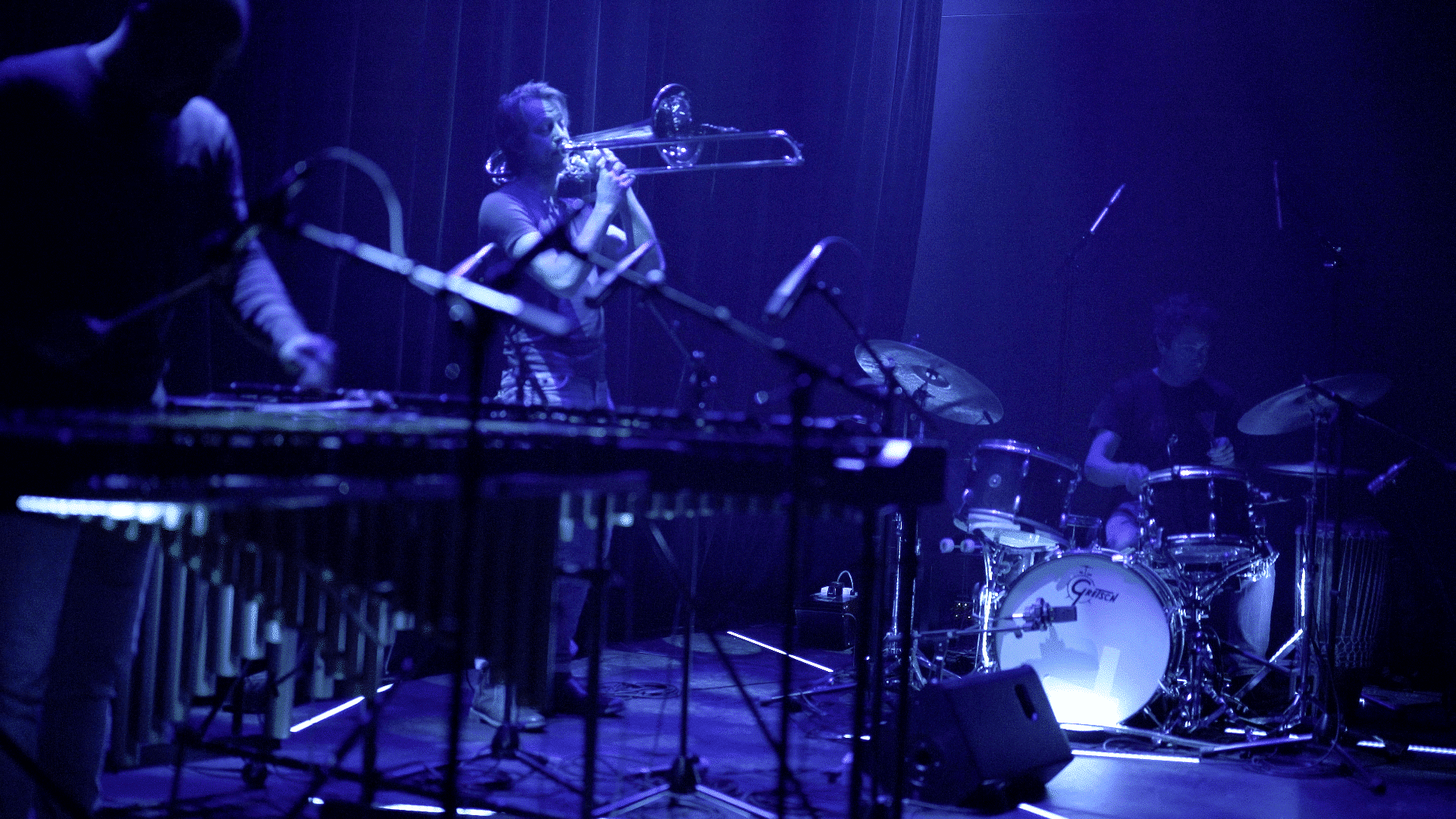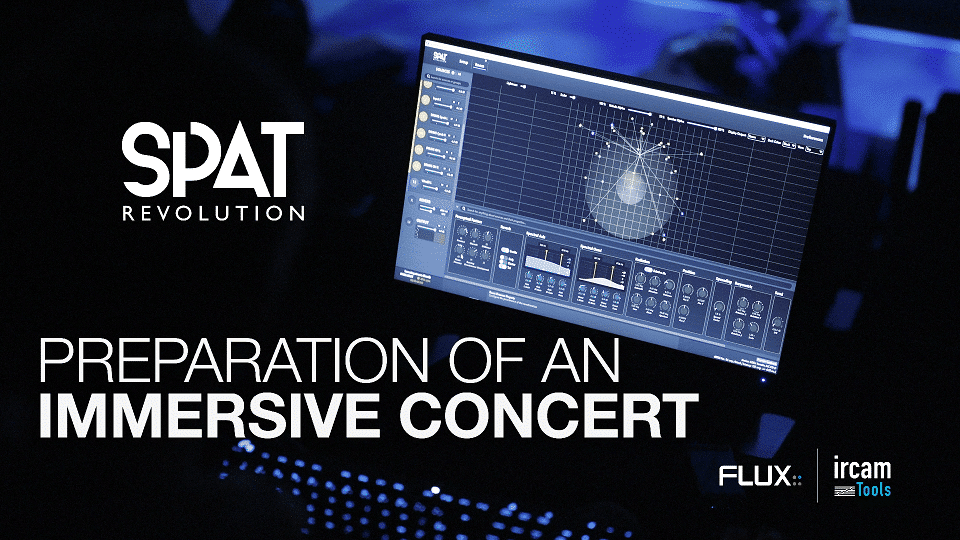From Pre-Production to Live Show at the 360 Paris Music Factory
Democracy for Immersive Audio – Introducing the use of immersive audio in a performing arts venue is not a crazy exclusive scientific stunt, and not something that is out of reach today.
In the above video, Sound engineer Jean-Loup Pecquais talks about how to setup and configure a standard stereo or LCR system, with additional loudspeakers surrounding the audience, running through Spat Revolution to provide alternate advanced panning tools for mixing immersive for a concert at the 360 Paris Music Factory venue in Paris, France. A venue where guest artists and engineers now gets the the creative freedom to produce immersive content with the in-house system.
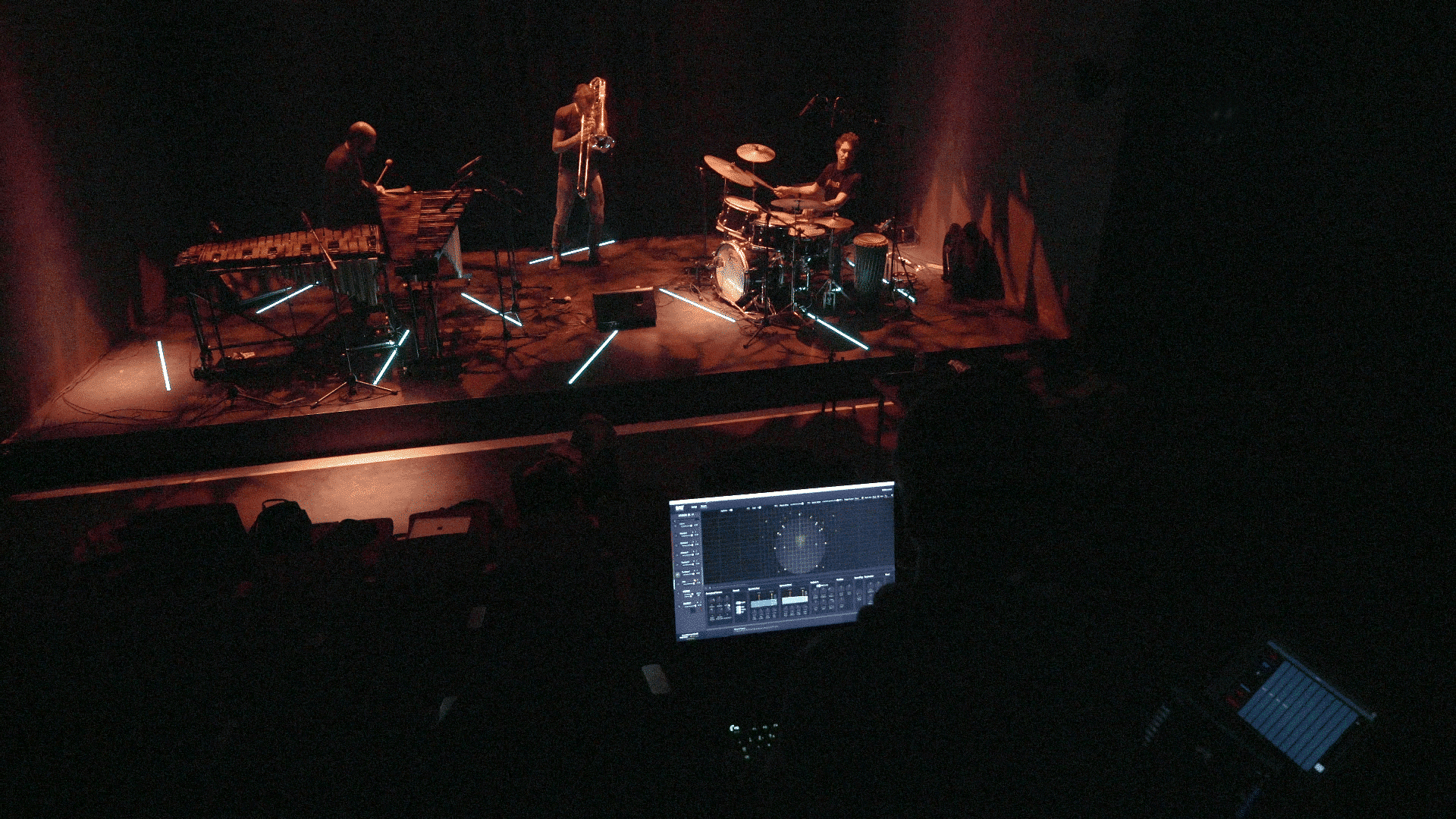
The 360 Paris Music Factory venue opened in the beginning of February 2020, in the heart ofthe Barbès district in Paris, and then presented its first immersive concert; a unique musical experience created by the Orléans jazz trio Akagera. Flux:: has been working in the 360 Paris Music Factory with the concert spatialisation aspect of the project and the venue is now equipped with Spat Revolution processing computer to host engineers and offer an alternate panning
The 360 is a quite small venue, with less than 200 seats and a total capacity of 300 with the tiers folded back. The acoustics in the venue is very controlled and quite dry making it an ideal situation for spatialization, and for playing with the direct sound to bring an additional dimension to the spectator’s experience.
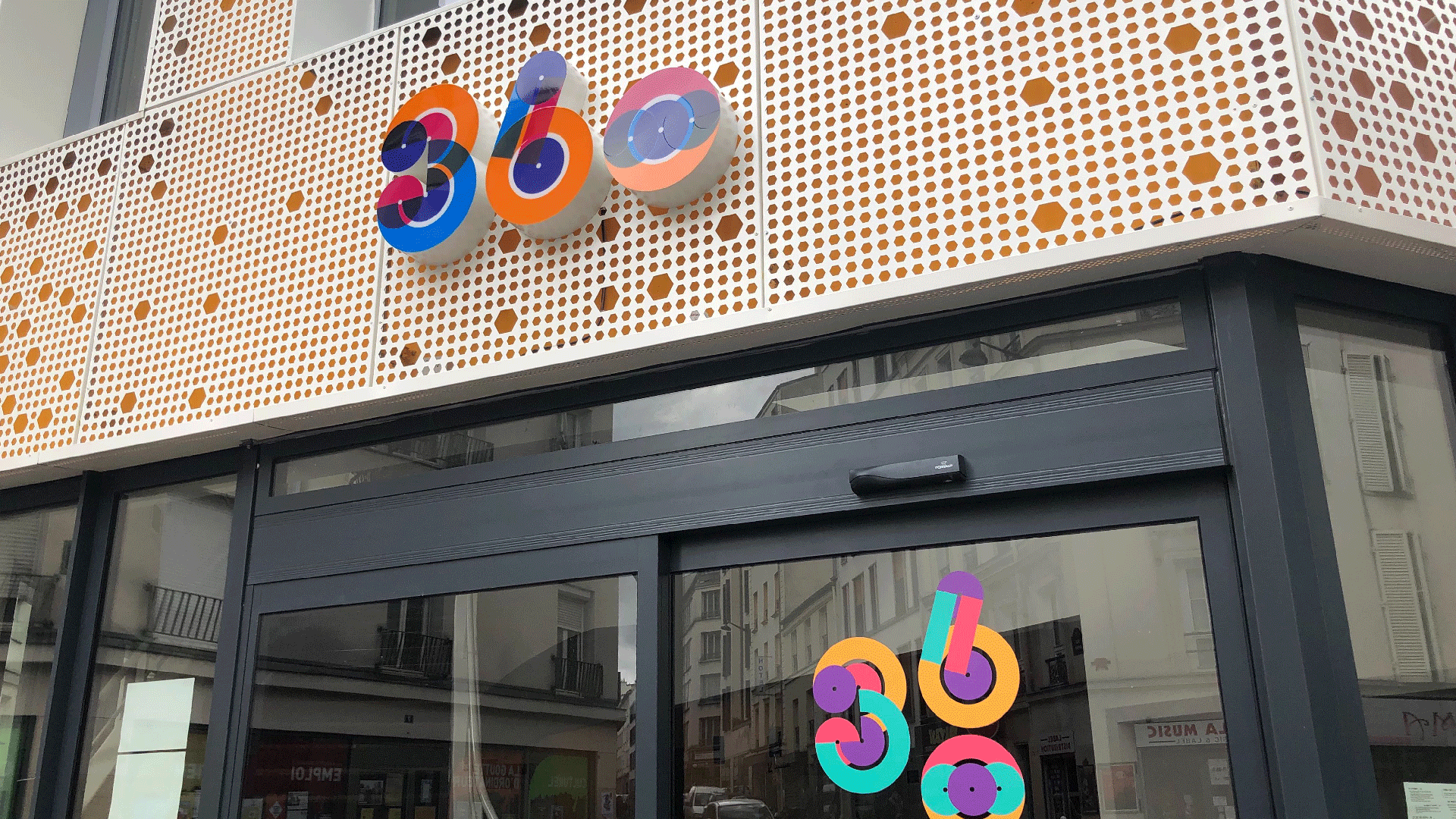
The 360 Music Factory offers a pleasant setting for working with immersive audio. With their in-house Nexo system and a signal path going through an Allen & Heath SQ5 and a simple 8 speaker system setup, using Spat Revolution, gives the audience a full true immersive experience.
The NEXO system consist of two P12s out front and six ID24s for the main floor provides the option for immersive sound. Up top at the balcony two P12s and two ID24s behind, covers the immersive aspect. The Allen & Heath SQ5 and two RIOs on the stage, all communicate on a Dante network, which enables a particularly fluid interaction with the SPAT Revolution.
The on-site system relies on eight main speakers surrounding the listener, and using the blueprint of their placement, provided by the NEXO NS-1 system, the speaker arrangement was sketched up in SPAT Revolution. By entering the placement of each speaker into the SPAT and from that configuration create a binaural simulation, the engineer can then listen in binaural from home, or anywhere outside the venue, and get an idea of what may happen during the show.
This approach creates the advantage to get started already in beforehand, using a multitrack recording from a previous concert, sending the tracks to Auxes in a DAW (in our case, Reaper) with SPAT Send plug-ins inserted, and then summing to a bus with the SPAT Return plug-ins inserted to get the signal return back from SPAT again.

In SPAT Revolution all the inputs correspond to the send plug-ins from the DAW, each and one connected to a source object, and the sources routed to a Room to work virtually in the acoustic space of the concert hall, distributing the sounds within the space, start imagining soundscapes and playing with the reverb, all in order to envisage how the show will play out in the end.
To monitor this in binaural a Master can be created and linked to the Room, with a conversion block in the Binaural Monitoring block to convert the actual 8.1 system to binaural. Option in the Binaural Monitoring block to select an HRTF
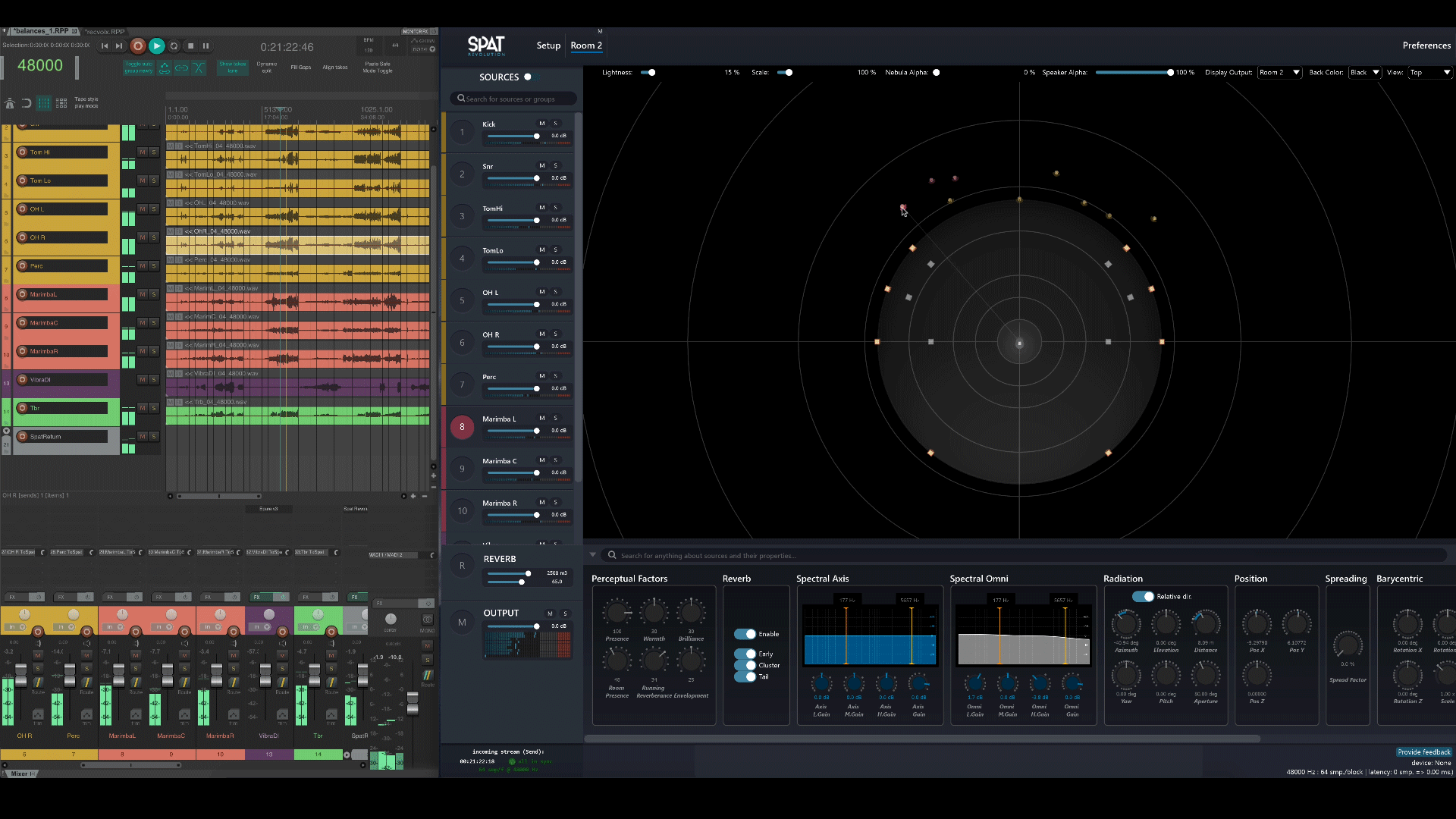
With this setup, it’s possible to start working on the placement of the instruments in the space, based on the recorded material, and to use the workflow to anticipate a certain number of things that may happen in the venue.
